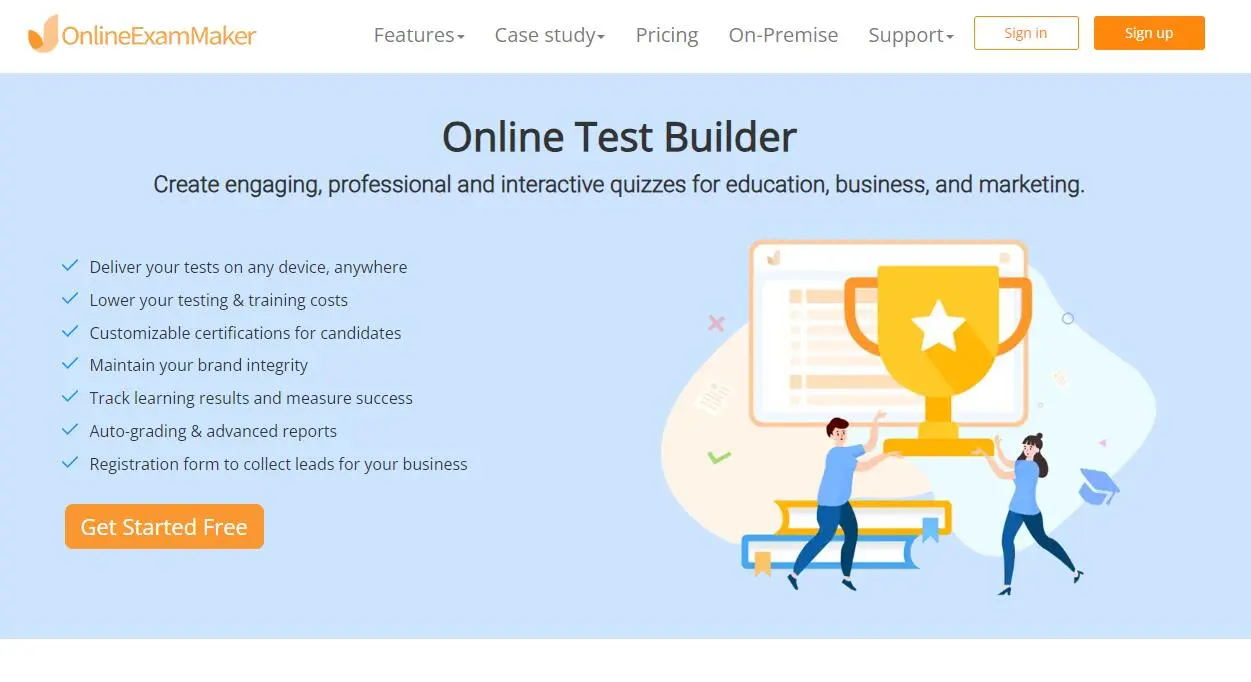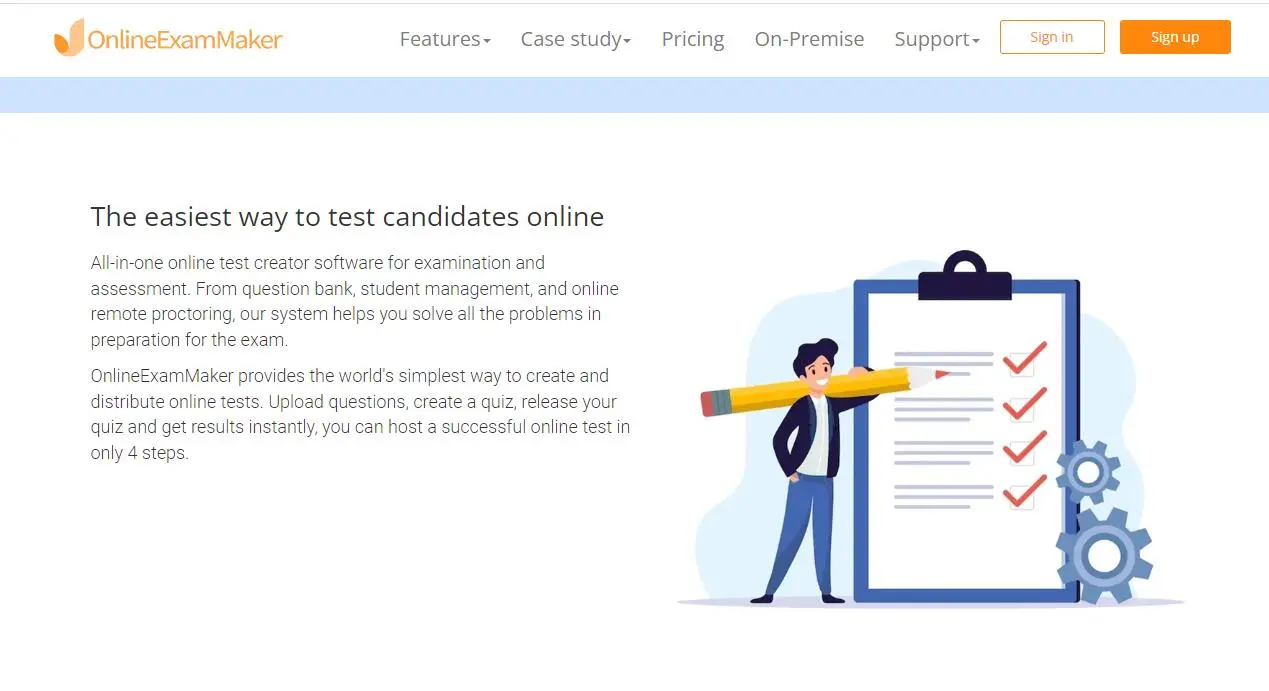The landscape of education is evolving at an unprecedented pace, driven largely by the integration of technology into the classroom. Among the myriad of ed-tech tools available, interactive test makers have emerged as valuable assets for educators. These tools go beyond the traditional multiple-choice format, offering innovative ways to assess student learning and engagement. In this article, we’ll explore the advantages of interactive test makers and delve into creative ways they can be employed in the modern classroom.
The Advantages of Interactive Test Makers
Interactive test makers have transformed the assessment and evaluation process in education. Their benefits extend far beyond the convenience of digital assessments:
Enhancing Assessment and Evaluation: Interactive test makers empower educators to create assessments that truly gauge students’ understanding of the material. They enable the incorporation of various question types, allowing for more comprehensive evaluations.
Pro Tip
Want to assess your learners online? Create an online quiz for free!
Promoting Engagement and Active Learning: Interactivity captivates students’ attention and encourages active participation. Engaged learners are more likely to absorb and retain information, leading to improved outcomes.
Streamlining Test Creation and Administration: Interactive test makers simplify the assessment creation process, saving educators valuable time. Additionally, they facilitate the grading process, providing prompt feedback to both students and instructors.

Interactive Test Makers: Beyond Multiple Choice
Gone are the days when assessments were limited to multiple-choice questions. Interactive test makers offer a wide array of question types and formats, opening the door to creative assessment strategies:
Exploring Diverse Question Types: Interactive simulations and scenarios, drag-and-drop questions, and matching exercises are just a few examples of the question types available. These formats challenge students to apply their knowledge in practical ways.
Fostering Critical Thinking and Problem-Solving: Interactive assessments push students to think critically and solve problems. They require not only knowledge but also the ability to apply that knowledge in real-world scenarios.
Real-World Application Through Interactive Assessments: Interactive assessments simulate real-life situations, allowing students to apply their knowledge and skills. For example, in a history class, students might analyze historical documents and make decisions as if they were part of that era.
Gamification and Quizzes
Gamification, the use of game elements in non-gaming contexts, has gained traction in education. Interactive test makers can be employed to create quiz-style games within the classroom:
The Gamification Trend in Education: Gamification motivates students by incorporating elements such as competition, rewards, and immediate feedback. These elements make learning more engaging and enjoyable.
Using Interactive Test Makers for Quiz-Style Games: Educators can design quizzes that mimic game formats, such as trivia, board games, or escape rooms. These formats encourage healthy competition and stimulate cognitive skills.
Encouraging Competition and Collaboration: Gamified assessments can be designed to foster competition among students or promote collaborative problem-solving. These experiences mimic real-world challenges and enhance teamwork and communication skills.
Gamified Assessments for Formative Learning: Beyond traditional summative assessments, gamified quizzes can serve as formative tools, providing ongoing feedback to help students track their progress and improve their performance.
Personalized Learning Paths
Interactive test makers have the capability to adapt assessments to individual student needs. This personalization ensures that each student receives tailored instruction:
Adapting Assessments to Individual Student Needs: Interactive test makers can adjust the difficulty of questions based on individual performance. This adaptive approach ensures that students are appropriately challenged.
Tailoring Content Based on Performance: As students progress through assessments, the software can dynamically adjust the content presented. Topics that require reinforcement are revisited, while students who excel can explore more advanced material.
Providing Immediate Feedback and Remediation: Interactive test makers can offer immediate feedback to students. When a student answers a question incorrectly, the software can provide explanations and additional resources to support learning.

Interactive Test Makers for Skill Development
These tools are not limited to traditional academic subjects; they can be applied to various skill development areas:
Language Learning and Vocabulary Acquisition: Language educators can use interactive test makers to create vocabulary quizzes with audio, images, and interactive exercises that enhance language acquisition.
Mathematical Problem-Solving: Math assessments can include interactive geometry problems, graphing tools, and equation solvers, fostering a deeper understanding of mathematical concepts.
Scientific Experiments and Simulations: Science teachers can design assessments that simulate laboratory experiments, allowing students to make observations, collect data, and draw conclusions virtually.
Artistic and Creative Skills Development: In art and music classes, interactive test makers can assess students’ creative work, such as digital art or musical compositions, fostering artistic expression and critical analysis.
Peer Assessment and Collaboration
Interactive test makers can facilitate peer assessment and collaborative learning:
Peer Review Assignments: Students can evaluate and provide feedback on their peers’ work, promoting critical thinking and constructive feedback skills.
Collaborative Problem-Solving Assessments: Interactive assessments can require students to collaborate in real time to solve complex problems, simulating team-based work environments.
Fostering Teamwork and Communication Skills: Collaborative assessments help students develop teamwork and communication skills, which are essential in today’s interconnected world.
Real-World Simulations and Scenarios
Preparing students for real-life challenges is a crucial aspect of education. Interactive test makers can create immersive simulations and scenarios:
Preparing Students for Real-Life Challenges: Simulations and scenarios mirror real-world situations, allowing students to apply their knowledge and skills in practical contexts.
Interactive Simulations in History and Social Studies: History and social studies classes can benefit from interactive simulations that immerse students in historical events, encouraging critical analysis and decision-making.
Business and Management Simulations: Business and management courses can utilize simulations to simulate business scenarios, such as market analysis, budgeting, and strategic planning.
Inclusivity and Accessibility
Interactive test makers play a vital role in ensuring that assessments are accessible to all students, regardless of their learning styles or abilities:
Ensuring Accessibility for All Students: Interactive assessments can include features such as audio descriptions, screen readers, and keyboard navigation to accommodate students with disabilities.
Catering to Diverse Learning Styles: Different students have different learning styles. Interactive assessments can cater to visual, auditory, kinesthetic, and reading/writing learners, ensuring that each student has an equitable assessment experience.
Adapting Assessments for Students with Disabilities: Students with disabilities may require accommodations such as extra time or specific question formats. Interactive test makers can easily provide these accommodations.
Data-Driven Insights
Interactive test makers generate valuable data that can inform teaching practices:
Leveraging Data Analytics for Improved Teaching: Data analytics provide insights into student performance, enabling educators to identify areas of strength and weakness.
Identifying Areas of Improvement for Students: Educators can pinpoint areas where individual students or the class as a whole may be struggling, allowing for targeted interventions.
Adjusting Instructional Strategies Based on Assessment Data: Real-time data can inform instructional decisions, helping educators adapt their teaching methods to better meet student needs.
OnlineExamMaker: Easy-to-use Test Maker for Teachers & Students
OnlineExamMaker offers a user-friendly online exam platform that enables teachers to design and organize online assessments & courses. This feature fosters creativity in lesson delivery, promoting interactive and dynamic classroom experiences that cater to diverse learning styles.
Educators can create a wide range of assessments, from traditional quizzes to complex performance-based tasks, and leverage the platform’s automated grading system to save valuable time while maintaining accuracy. The comprehensive data analytics feature provides in-depth insights into student performance, helping teachers identify strengths, weaknesses, and individual learning needs for targeted interventions.
Top Features
Exam schedule: Create a schedule for your assessment, configuring the start date, end date, and notice your students via email, message.
Question Pool: Create a question pool through the question bank and specify how many questions you want to be randomly selected among these questions.
Re-shuffle the questions: Online exam tool that provides you an option to automatically re-shuffle the questions and choices before sending it to another student, trainee, or batch.
Create Your Next Quiz/Exam with OnlineExamMaker
Challenges and Considerations
While interactive test makers offer numerous benefits, educators must also address certain challenges:
Technical Requirements and Infrastructure: Adequate technology and internet access are required for seamless use of interactive test makers. Schools and districts must ensure that all students have access to these resources.
Ensuring Assessment Security and Integrity: With the convenience of technology comes the challenge of preventing cheating and ensuring the integrity of assessments. Strategies such as secure browsers and proctoring may be necessary.
Balancing Interactive Assessments with Traditional Methods: Interactive assessments are valuable but should be used in conjunction with traditional assessment methods to provide a well-rounded evaluation of student learning.
Implementing Interactive Test Makers
Successfully implementing interactive test makers in the classroom involves several key steps:
Integrating Test Makers into the Curriculum: Align the use of interactive test makers with the curriculum and learning objectives to ensure that assessments are meaningful and relevant.
Training Educators and Students: Educators and students should receive training on how to use interactive test makers effectively. This includes understanding the software’s features and functions.
Aligning with Educational Objectives and Standards: Interactive assessments should align with educational standards and objectives, ensuring that they contribute to students’ academic progress.
Conclusion
Interactive test makers have revolutionized the way assessments are conducted in the modern classroom. They offer educators the flexibility to create engaging, personalized assessments that foster critical thinking, problem-solving, and real-world application of knowledge. As technology continues to advance, the potential for innovative assessment strategies using interactive test makers is limitless. By embracing these tools and exploring creative ways to implement them, educators can provide a dynamic and enriching learning experience for their students, preparing them for success in an ever-changing world.